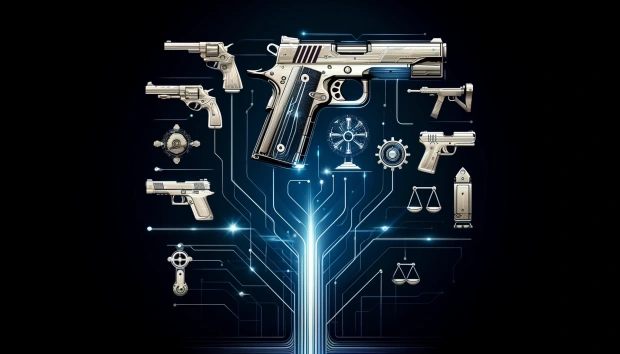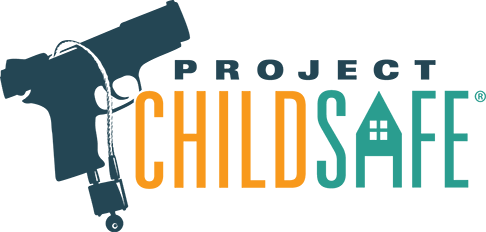Search
Cart
There are no items in your cart.
Login
The Evolution of Handguns: Comparing 1911, 2011, DA/SA, SAO, Striker-Fired Pistols, and Revolvers

Introduction to Handgun Evolution
The world of handguns has evolved significantly over the past century, with advancements in technology and design leading to a diverse array of options for shooters. Among the most notable designs are the classic 1911, its modern successor the 2011, Double Action/Single Action (DA/SA) pistols, Single Action Only (SAO) pistols, striker-fired pistols, and revolvers. Each of these handgun types offers unique advantages and disadvantages, catering to different levels of operator expertise and various use cases, from self-defense and law enforcement to competitive shooting and recreational use. Understanding the evolution and distinct characteristics of these handguns can help shooters make informed decisions when selecting the best firearm for their needs.
.
1911 Pistols: A Century of Reliability
The 1911 pistol is a legendary firearm that has stood the test of time, renowned for its durability, performance, and historical significance. With over a century of service, the 1911 remains a favorite among enthusiasts for its exceptional trigger, customizable nature, and ergonomic design. However, it does come with some drawbacks, such as limited magazine capacity and a heavier weight. The 1911 also demands a higher level of operator expertise due to its manual safety and single-action operation, making it more suitable for experienced shooters.
Advantages:
- Proven Reliability: The 1911 has a century-long track record of reliability and performance.
- Excellent Trigger: Known for its crisp, single-action trigger, which aids in accuracy.
- Customization: Highly customizable with a vast aftermarket for parts and accessories.
- Ergonomics: Slim design makes it comfortable for concealed carry.
Disadvantages:
- Capacity: Typically limited to single-stack magazines, resulting in lower capacity.
- Weight: Generally heavier due to all-metal construction.
- Maintenance: Requires more frequent cleaning and maintenance compared to newer designs.
Operator Expertise:
- Intermediate to Advanced: The 1911's operation, including the use of a manual safety and single-action trigger, requires more training and practice.
.
2011 Pistols: Modern Evolution
The 2011 pistol represents the next step in the evolution of the classic 1911, offering significant enhancements while retaining the beloved features of its predecessor. With increased magazine capacity through double-stack designs, the 2011 provides shooters with more firepower. It also offers greater customization options and improved balance and control, thanks to its wider frame. However, these advancements come at a higher cost and increased complexity, necessitating more detailed maintenance. While the operational use of a 2011 is similar to a 1911, the additional features and maintenance requirements may require a higher level of expertise.
Advantages:
- Increased Capacity: Double-stack magazines significantly increase round count.
- Enhanced Customization: Builds on the 1911 platform with even more customization options.
- Balance and Control: Maintains the ergonomics of the 1911 while providing better balance due to the wider frame.
Disadvantages:
- Cost: Generally more expensive due to advanced materials and custom manufacturing.
- Complexity: More complex than the 1911, potentially requiring more in-depth maintenance.
Operator Expertise:
- Intermediate to Advanced: The operational use of a 2011 is similar to a 1911, but its maintenance and customization options might demand more knowledge. However, using the firearm effectively remains similar between the two.
.
DA/SA Pistols: Versatility and Control
Double Action / Single Action (DA/SA) pistols offer a unique blend of versatility and control, allowing shooters to benefit from both double-action and single-action modes. This flexibility provides added safety, as the heavier double-action first pull can help prevent accidental discharges. Many DA/SA pistols also come with high-capacity magazines, enhancing their appeal. However, mastering the transition between the double-action and single-action trigger pulls can be challenging and requires dedicated training. These pistols are best suited for intermediate shooters who are willing to invest the time to become proficient in their use.
Advantages:
- Versatility: Offers the flexibility of both double-action and single-action modes.
- Safety: Double-action first pull can act as a safety feature, reducing the chance of accidental discharge.
- Capacity: Often comes with high-capacity magazines.
Disadvantages:
- Trigger Transition: The transition from the heavy double-action pull to the lighter single-action pull can be challenging.
- Training: Requires more training to become proficient with the two trigger pulls.
Operator Expertise:
- Intermediate: Suitable for shooters who can dedicate time to mastering the trigger transitions and safe handling.
.
SAO Pistols: Precision and Performance
Single Action Only (SAO) pistols are renowned for their precision and performance, featuring consistent and light triggers that enhance accuracy. With fewer moving parts compared to DA/SA pistols, they often boast increased reliability. However, SAO pistols depend on manual safeties, which can be a disadvantage under stress if not properly trained. Additionally, they may have lower magazine capacities compared to striker-fired pistols. SAO pistols require intermediate to advanced expertise to manage their safeties and single-action operation effectively, making them similar to 1911 and 2011 models but with specific training nuances.
Advantages:
- Trigger Consistency: Single-action only triggers are consistent and often very light, aiding in accuracy.
- Simplicity: Fewer moving parts compared to DA/SA, often leading to increased reliability.
Disadvantages:
- Safety Dependency: Requires the use of manual safeties, which can be a disadvantage under stress if not trained properly.
- Capacity: Depending on the design, may have lower capacity compared to striker-fired pistols.
Operator Expertise:
- Intermediate to Advanced: Requires training to manage safeties and single-action operation under stress. Similar to the 1911 and 2011, though specific training nuances exist.
.
Striker-Fired Pistols: Modern Efficiency
Striker-fired pistols are celebrated for their modern efficiency, featuring a simplified design with no external hammer or manual safety in most models, which simplifies operation. They offer a consistent trigger pull with no mode transition, making them easy to use, and they typically come with high-capacity magazines. Maintenance is straightforward due to fewer parts and simple disassembly. However, some shooters may prefer the feel of single-action or double-action triggers over the often mushy feel of striker-fired triggers, and the customization options, while improving, are not as extensive as those for 1911 or 2011 platforms. Striker-fired pistols are ideal for beginners to intermediate shooters due to their simplicity and ease of use, yet they are also favored by professionals for their reliability and performance.
Advantages:
- Simplicity: No external hammer or manual safety in most models, simplifying operation.
- Ease of Use: Consistent trigger pull with no transition between different modes.
- Capacity: Generally comes with high-capacity magazines.
- Maintenance: Easier to maintain with fewer parts and simple disassembly.
Disadvantages:
- Trigger Feel: Some shooters prefer the feel of single-action or double-action triggers over the consistent but often mushy striker-fired triggers.
- Limited Customization: While improving, the customization options are not as extensive as those for 1911 or 2011 platforms.
Operator Expertise:
- Beginner to Intermediate: Ideal for new shooters due to its simplicity and ease of use, but also used by professionals for its reliability and performance.
.
Revolvers: Classic Simplicity and Reliability
Revolvers are renowned for their classic simplicity and reliability, with fewer moving parts making them extremely easy to maintain. They offer versatility by accommodating a wide range of calibers, including powerful magnum rounds. Revolvers are generally considered safe for new shooters due to their straightforward operation and robust construction, ensuring durability under heavy use and harsh conditions. However, they are limited in capacity, holding only 5-8 rounds, and reloading is slower compared to semi-automatic pistols, although speed loaders can help. Revolvers are often bulkier and heavier, which can affect concealability and comfort. Their simple operation makes them ideal for beginners, but mastering quick reloads, handling powerful calibers, and learning to stage the double-action trigger can benefit from intermediate training.
Advantages:
- Simplicity: Fewer moving parts make revolvers extremely reliable and easy to maintain.
- Versatility: Can shoot a wide range of calibers, including powerful magnum rounds.
- Safety: Generally safer for new shooters as they require deliberate actions to fire.
- Durability: Robust construction means they can endure heavy use and harsh conditions.
Disadvantages:
- Capacity: Limited to 5-8 rounds, significantly lower than semi-automatic pistols.
- Reload Speed: Slower to reload compared to magazines, though speed loaders can help.
- Bulk: Often bulkier and heavier, which can impact concealability and comfort.
Operator Expertise:
- Beginner to Intermediate: Simple operation makes them ideal for beginners, but learning quick reloads, handling powerful calibers, and mastering the double-action trigger, especially staging it, can benefit from intermediate training.
.
Choosing the Right Handgun
Selecting the right handgun depends on the shooter's experience level, intended use, and personal preferences. The 1911 offers a timeless design with excellent customization, ideal for enthusiasts and advanced shooters. The 2011 builds on this legacy with increased capacity and modern features, with usage remaining similar to the 1911 but potentially requiring more knowledge for maintenance and customization. DA/SA pistols provide versatility and safety but require practice to master the trigger transitions. SAO pistols offer precision and performance with a similar level of expertise needed for 1911 and 2011 models. Striker-fired pistols, with their simplicity and ease of use, are suitable for a wide range of users, from beginners to professionals. Revolvers offer unparalleled simplicity and reliability, making them ideal for beginners but also appreciated by experienced shooters for their robustness and versatility, though mastering the double-action trigger can require additional training.
When choosing a handgun, consider factors such as capacity, maintenance, customization, and your level of comfort and experience with different trigger systems and safety mechanisms. Each type of pistol has its own strengths and weaknesses, and the best choice will ultimately depend on your specific needs and preferences.
By understanding the evolution and distinct characteristics of these handgun types, you can make an informed decision and find the firearm that best suits your requirements. Whether you're a novice shooter or an experienced marksman, there's a perfect handgun out there waiting for you.
NEWSLETTER










Leave a Comment